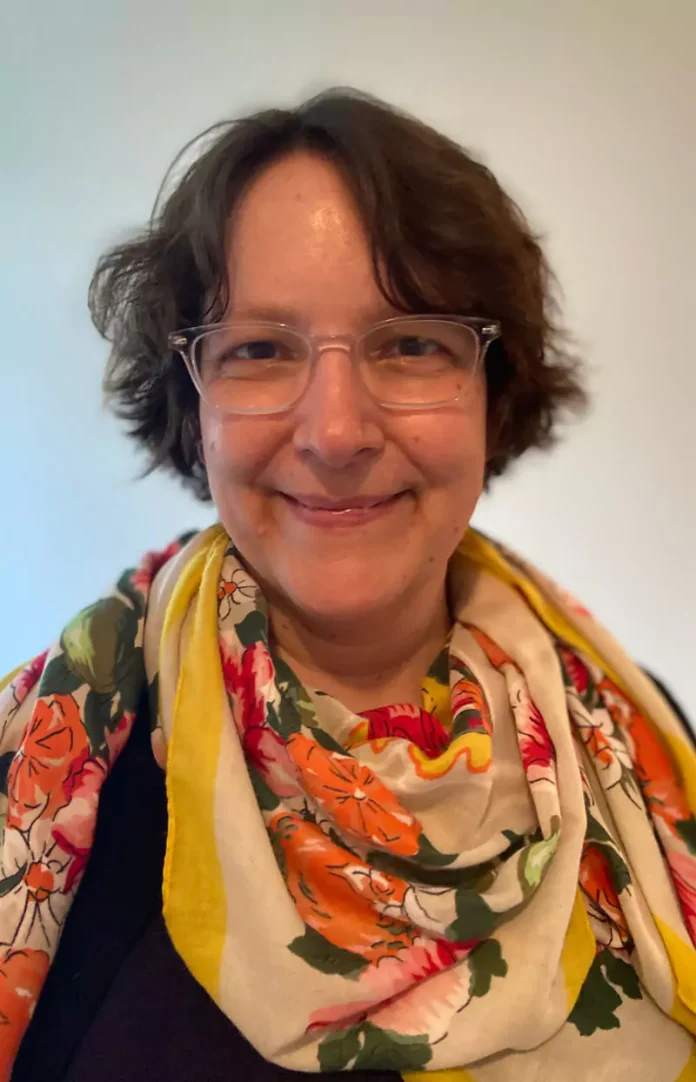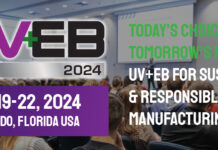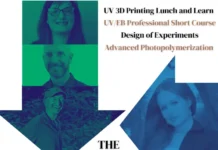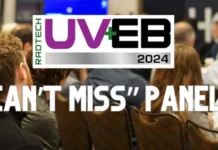By Lara Copeland, contributing writer, UV+EB Technology
What is your educational and professional background?
I like to introduce myself as being all California educated. I don’t live in California anymore, but it is along the line of who I am. I did my undergraduate work at UC Berkeley in chemistry and molecular and cell biology. I then worked on a PhD at UCLA, in the department of chemistry and biochemistry under Jeff Zink. After completing that, I did post-doctoral studies at the University of Southern California in the department of chemistry under Mark Thompson.
Professionally, I wound up going backwards through the supply chain. I started out doing consumer products with Hewlett Packard, and I moved from that view into the semiconductor industry with Brewer Science. For me, it was a shift from the consumer “what people like” view to the physics of “what’s needed” view – as a view into electronics processing. It was incredibly challenging because of all the requirements that almost seem medical, such as high purity, etc. From there, I moved into a raw-materials view, starting point products with IGM Resins. Currently, I work with Michelman, and we sell formulated products to enable new applications and capabilities.
How did you get involved in UV- / EB- / LED-curable technology?
My graduate and post-doctoral studies focused on the fundamental interactions of chemistry with light or energy, with questions like, “What does a molecule do with energy?” and “What can it do with energy?” In academia, these targets were energy collection, like solar cells or light production (like LEDs). When I got into the workforce at HP, I worked on an optical disc application (like anyone’s heard of those anymore) that used laser energy or laser light to print the image onto the topcoat of the optical disc – and that topcoat was UV cured. So, it was kind of the perfect example because it was using energy to do one reaction, which was to turn it from a liquid to hard coat, and then you were using another wavelength of energy, or another way to deliver energy, to do the color change. There’s actually an article on this in The RadTech Report, the earlier generation of the association’s journal.
Why did you get involved in RadTech?
Well, I knew about RadTech because of colleagues, but my first experience with RadTech was the 2008 show. At the time, the journal wasn’t called UV+EB Technology; it was The RadTech Report. There was a dinner for the editorial board prior to the show even starting, and a good friend of mine, Molly Hladik, said, “You’re going to want to be involved in this.” So, she brought me along and had already talked to people about bringing me onto the editorial board. Before I really knew too much about RadTech, I was involved with the journal. In 2010, I started teaching short courses for the shows, in addition to being involved in the technical review committee for all the technical papers that were presented at the shows. I was elected to the board in 2016, and that’s when I started as the co-chair for the editorial board committee for the journal.
As the new president of the board of directors, what do you see as the greatest needs in the curing industry? How is RadTech preparing to meet those needs?
I think as a long-time educator in this space, there are many good things we can be talking about – like where the technology is and the changing interests in the market or in the regulatory environment for example. But I think 2021 is going to be special – like 2020 – in that we really need to find more ways to connect with each other. And so I think for this year, part of the focus for me is to find more opportunities where RadTech can provide that forum for connection. We’ve really had a wonderful response to our webinar series, with plenty of views and good participation, but we’d like to look for opportunities where we can make those two-way dialogues.
What do you appreciate about being a part of RadTech?
One of the things that I’ve always loved about working with my colleagues at RadTech is really this communal sense of moving forward. I think we’re unique as a trade organization in that we have a common technology focus, but we use that technology to solve a whole bunch of different problems. So, I think that does give us a combined sense of purpose that enables us to work together very collaboratively.






